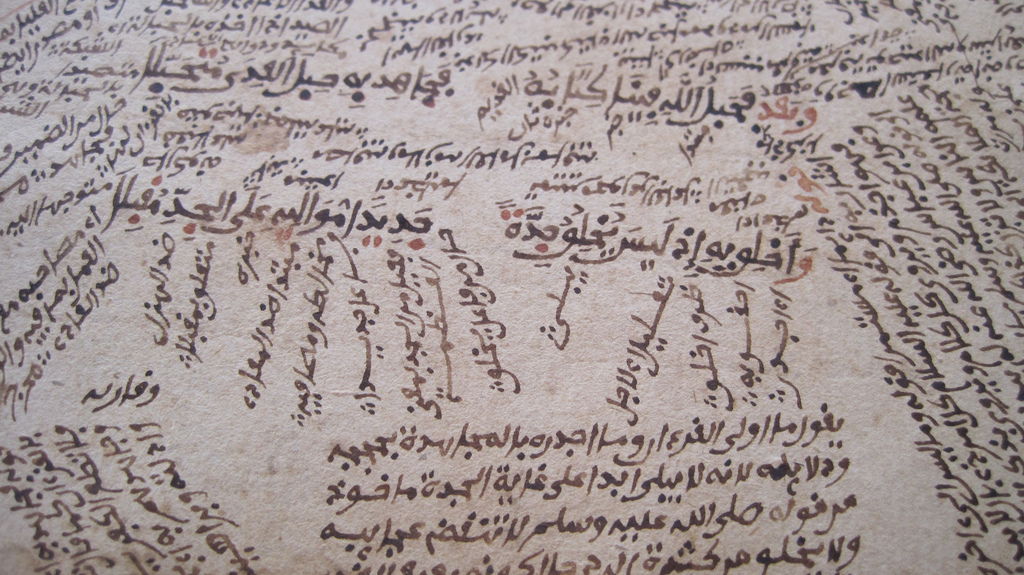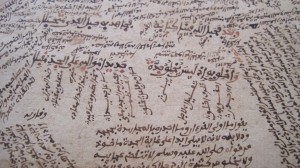The second part of this series of posts is the disciplinary subject in question, namely History. Following this will be a post/small Review of Literature for the intersections of mobile learning and higher education, including a clumsy attempt to use Sharples’ “Towards a Theory of Mobile Learning” as a guide, but for now we will stick with History. History has some peculiar disciplinary traits that would need to be either mapped or altered in mobile environments (presumably) and so it is important to understand how Historians produce knowledge statements, collaborate, and disseminate their work.
I have a few questions and assumptions even for how these disciplinary practices might apply to developing regions. What I am about to present here isn’t exclusive to developed regions’ higher education practices, but they are certainly tilted that way. So, I should just lay these questions, assumptions, and biases out ahead of time.
- Simply put, is disciplinary practice in History in higher education the same for developed and developing regions?
- What does historical collaboration look like in History in developing regions? Is it valued, encouraged? This is important especially for an emphasis on dialogue (as discussed in the last post) in mobile learning. If collaboration is implicitly encouraged or discouraged, that would certainly impact the efficiency of focusing on dialogue as pedagogical construct.
- What does the process of research dissemination look like in developing regions and does mobile offer any potential here for greater exposure to the work of developing nation’ academics?
- Although teaching isn’t specifically part of my research, what does instruction look like in developing regions for History? By this I mean, what is the role of historical instruction at the graduate school level? A mentoring role towards identifying with the profession? A focus on research output? What is the role of independent study here (PhD dissertation as isolated event).
- One pesky issue I have is the historical emphasis on primary sources, which are often non-textual and dynamic. How, and should, these types of primary sources be accounted for in a mobile learning environment primarily based on SMS technology (if indeed it should be based on SMS technology)? This sounds like a technology question (and it essentially is), but it also forces a rethink about what is being provided for in mobile learning and at what stage of the proces.
That being said, let’s get on with it. Part 3 will be on establishing identity as a Historian, how the role of higher education in the practice of History is more of an apprenticeship method, creating practicing, self-identifying members of a profession. Not exactly a trade school, but certainly more pragmatic than we often equate with Humanities practice.
Disciplinary structure of History: ontology, epistemology, and evidence
A considerable amount of research exists dedicated to understanding the particular learning needs, disciplinary structure, and conceptualization of potential teaching-learning environments in the field of History.
One such example is the The ETL Project (Enhancing Teaching-Learning Environments in Undergraduate Courses). The ETL Project’s Subject Overview Report: History has proven invaluable in identifying several of the key factors to query in regards to mobile learning in the discipline of History (Anderson, Day, 2005). This subject overview outlines various frameworks for the practice of History within higher education, including the nature of instruction in higher education. Specifically, what is it that students and faculty alike are intended to do? Anderson and Day point to Lee (2002), who claims that it is necessary to “equip students to understand the different kinds of claims we make about the past and the relation of these claims to the questions we ask and the evidence we adduce” (6). These claims we make to the past, the questions we ask, and the evidence we acquire represent the core ontological and epistemological structures that practitioners of History are beholden to. Much university level instruction in the field of History is specifically driven towards understanding historical knowledge claims, ontological questioning, and what constitutes appropriate sources of evidence; these foundations presumably would need to be mapped to any learning structure, mobile or otherwise.
Primary sources being used in conjunction with peer-reviewed research to validate knowledge claims is often the core practice that formal courses of study in History in higher education are attempting to bestow on their students. Primary sources and secondary research are used in this way for establishing validity. While secondary sources (peer-reviewed research) often have narrow perspectives, they do consult numerous primary sources in their creation and thus tend to be more reliable (Barton, 2005). The ability of a historian to oscillate between primary and secondary sources to establish validity, in this case validation of the historical knowledge claim, is a skill required by the profession.
Anderson and Day articulate the importance of making sure presented evidence is “consistent with what else is known historically about the issue under study. In other words, coherence of the available information is a critical aspect of historical explanation” (Anderson, Day, 2005, 7). Coherence in the presentation of evidence becomes a pedagogical concern, how those practicing History learn to construct and represent knowledge. The ability to coherently present evidence falls to both the practicing historian and the learning environments in which they conduct their work. In keeping with Day and Anderson’s suggestions, university learning environments, including formal mobile learning structures, should be viewed as a set of artifacts and processes, dynamic interactions between cultural and technical tools, disciplinary etiquette and practices, and prior experiences. These all, when coupled with the core historical process of validating historical knowledge claims, create a context for learning in the field of History in higher education (Anderson, Day, 2005, 7).
Historians emphasize the need to fully understand the context of an argument, where it sits in an ongoing scholarly dialogue, and the primary materials upon which it draws. Historians’ discovery process therefore tends to be wider-ranging and to cover lesser-known sources; they aspire to discover untapped sets of data or primary materials upon which to base their analyses (Griffiths et al, 2006, 3). All this discovery and interaction with content, dialogue, and sources would need to be reflected in mobile learning developed for the practice of History in higher education. For the purposes of this research, it is believed that general receptiveness will hinge on the historian’s belief that mobile learning is capable of accounting for these processes, discovery mechanisms, and need for diverse content. A further wrinkle in the practice of History in higher education is in the hierarchy of published research, research that is linked to professional advancement within the profession. The importance of the monograph and its position as the most respected form of scholarly output in History, one that directly affects job prospects for historians, is often discussed (Griffiths et al, 2006, 5). Hence, much focus in both learning and research in History in higher education is directed towards the eventual production of such monographs; the ability to manufacture such long-form research is considered a prerequisite for the profession.
This is reflected in instructional practices in History departments which emphasize long-form essays as appropriate assessment focus. Hounsell (1997, 2000) articulates this emphasis on long-form research construction as appropriate academic discourse. This is manifest in History programs where great emphasis is placed on essay writing as “argument, as viewpoint, as arrangement” (Hounsell, 1997). Essay writing represents a valid and valued skill for History in terms of its stress on coherence and interpretation. Further, it stands as a measure of the potential marketable worth of the individual academic. Receptiveness towards mobile learning would be affected, this research believes, by its ability to satisfy the need for long-form research construction for both practicing historians (faculty writing manuscripts) and fledgling ones (students constructing essays for course requirements).




[…] Part 2: Disciplinary Practices of History […]
[…] Part 2: Disciplinary Practices of History […]